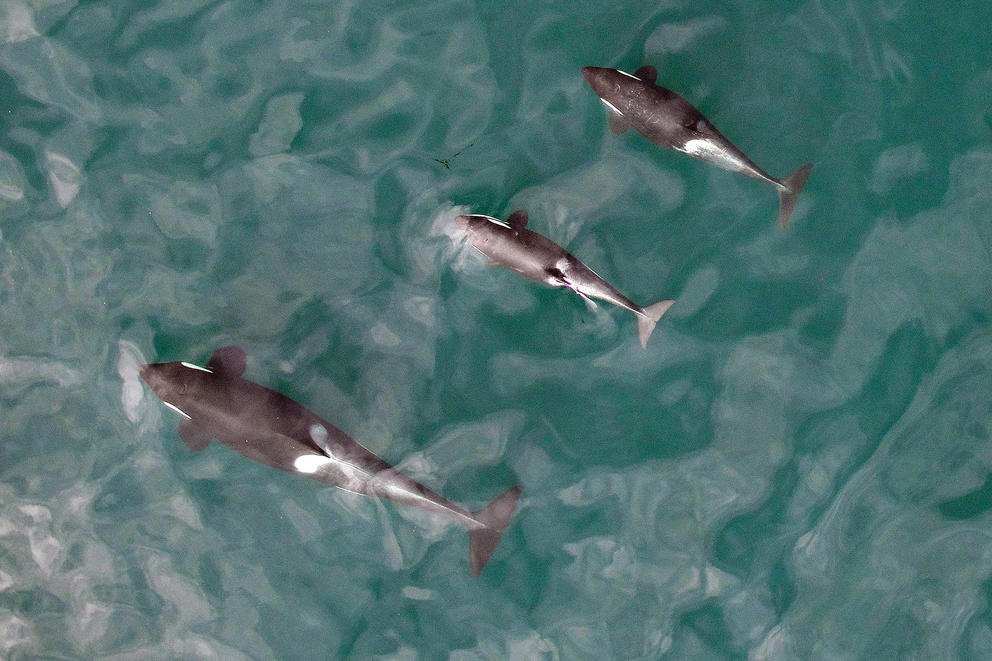It’s possible other things happened to the Pacific Northwest’s environment this year (I mean, duh). But if you’re looking for reasons to damn 2018 to the dustbin of years we’d rather have slept through, few things top the sight of orca J35, nicknamed Tahlequa, carrying her dead calf on her nose for 17 days over 1,000 excruciating miles. The world seemed to recognize our bummer summer as a harbinger of the planet we’re about to inherit — one where human activity creates an endless feedback loop of hopelessness, disconnect and environmental ruin.
But hey: Turn that frown upside down, Saddie McSadderton! While 2018 was an absolute mess for the Pacific Northwest’s natural world, it’s important to remember we (humans) are playing a long game, even if we’re deep into overtime and down by 30 (insert favorite sportsball metaphor). Losses have upsides. As we look toward 2019, we’re paying tribute to the hoary end-of-year-list trope by highlighting five of our region’s biggest environmental struggles while looking for glimmers of hope that could turn them into wins for 2019.
-
The orcas. Yes, there’s an upside to this longest, saddest episode of Blue Planet. The record-breaking spectacle of cetacean mourning brought international attention to the plight of Puget Sound’s resident pod of killer whales. All the outrage is doing more than just making children cry: Recommendations from Gov. Jay Inslee’s task force led him to earmark over a billion dollars for orca recovery — and some task force members are even cautiously optimistic the plan could work.
-
The carbon fee. For the second election in a row, Washingtonians voted down carbon pricing to curb emissions. Depending on whom you talk to, this was either a disastrous scuttling of the Evergreen State’s best chance to lead the country on carbon fixes or a sober rejection from an electorate convinced they can wait for a better deal. But the diverse coalition backing Initiative 1631 vows to remain in place to lobby this Legislature to pass similar bills. What’s more, individual elements of the coalition (like Washington’s tribes) hope to maintain political momentum to pursue smaller community-based solutions. For “no” voters, the win is obvious — unless you hoped to quell talk of a carbon fee for good. Hot tip: Don’t be surprised to see some version of a carbon fee or tax on the ballot in 2020.
-
Smoke and fire. The tremendous upswing in wildfires since 2000 means that by now Seattleites are learning that the smoke, haze and Blade Runner sunsets of late summer aren’t going away. This was the worst year, in fact, for air quality (some of the worst days of smoke and hazardous air quality, however, came from borrowed smoke blown in from California, Oregon, British Columbia and even Siberia). Washington Department of Natural Resources firefighters responded to a record 1,676 wildfires in 2018, with 350,000 acres burned. That’s down by about 50,000 acres in 2017, but predictions for low-to-moderate snowpack, a mild winter and a drier-than-average conditions could make 2019 wildfires a real rager. To prepare, Washington DNR honcho Hilary Franz requested $55 million over two years — double the previous amount — to boost everything from mitigation and training more firefighters to helicopters and public outreach. Gov. Inslee met her request: Now it’s up to the Legislature to pass it.
-
Hot summers are getting hotter. If it seems like our summers are getting more Californian, you aren’t imagining things. This past July, Seattle logged a new record for average high for the month: 82.8 degrees, and Seattle-Tacoma International Airport notched the second hottest and second driest summers ever recorded. But you can see an upside beyond the vitamin D boost, if you squint once again at the governor’s budget, which includes $268 million for clean energy projects. Efficient hydroelectric dams and grids, more electric cars, and four electric-hybrid ferries are earmarked for funding as part of the plan, along with high-speed rail to connect Vancouver, B.C., Seattle and Portland. Inslee also called for eliminating reliance on coal power by 2025 and dedicating $78 million towards making homes and buildings more efficient and less fossil-fuel dependent. The clean energy plan has detractors, and it can’t singlehandedly restore shellfish beds and salmon habitat damaged by warming temps. But it could shape where national climate policy goes in the coming years.
-
The (eventual) Big One. This one cheats a bit by extending the border of the Pacific Northwest way northwest to include Alaska, which is twice as far as Los Angeles. But a street-cracking 7.0 earthquake underneath Anchorage put all Ring of Fire residents on high alert. The upside: While there was significant damage, Anchorage didn’t suffer a single casualty — proof that the city’s earthquake preparedness plans that started after a catastrophic quake in the ’60s did the job. As Pacific Northwest Seismic Network director Harold Tobin explained, it’s a strong signal for Seattle to keep ongoing preparedness efforts in focus — including the 330-and-counting sensors his Zen in a chaotic year: “It’s the act of plate tectonics that makes this place a beautiful region,” Tobin said. “We wouldn’t have mountains, or the Sound, or the shape of the place without it."



